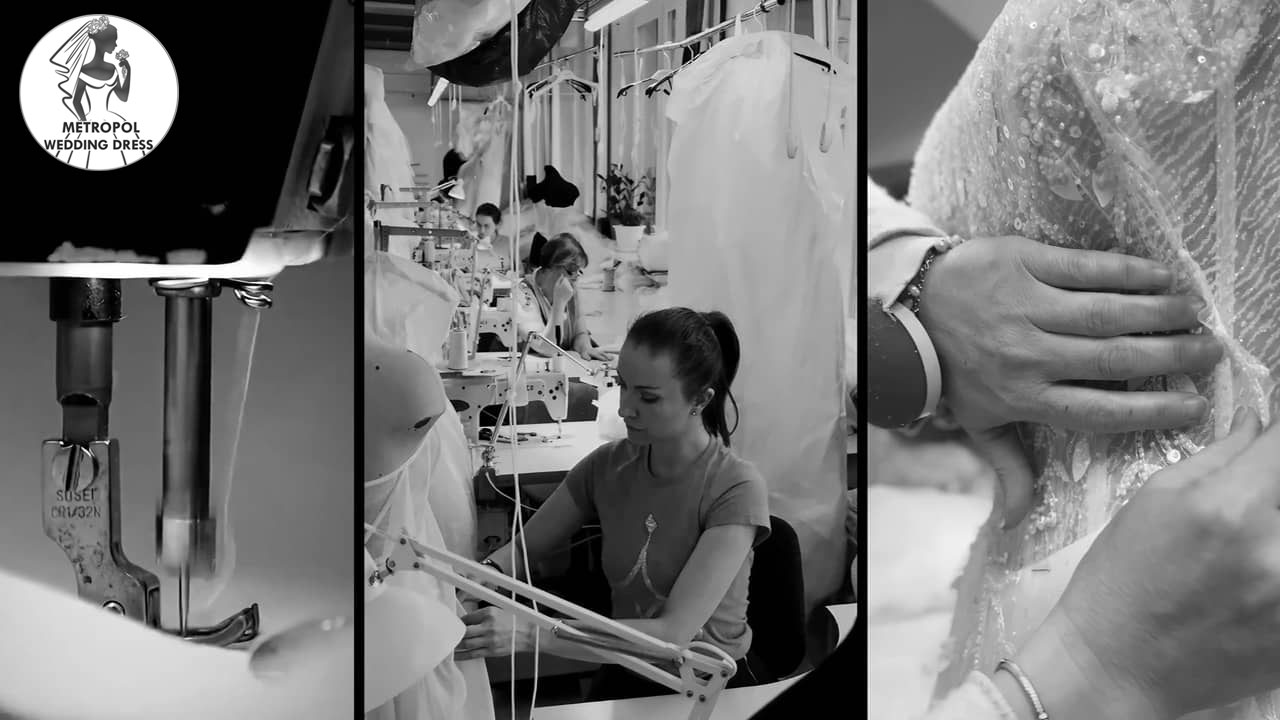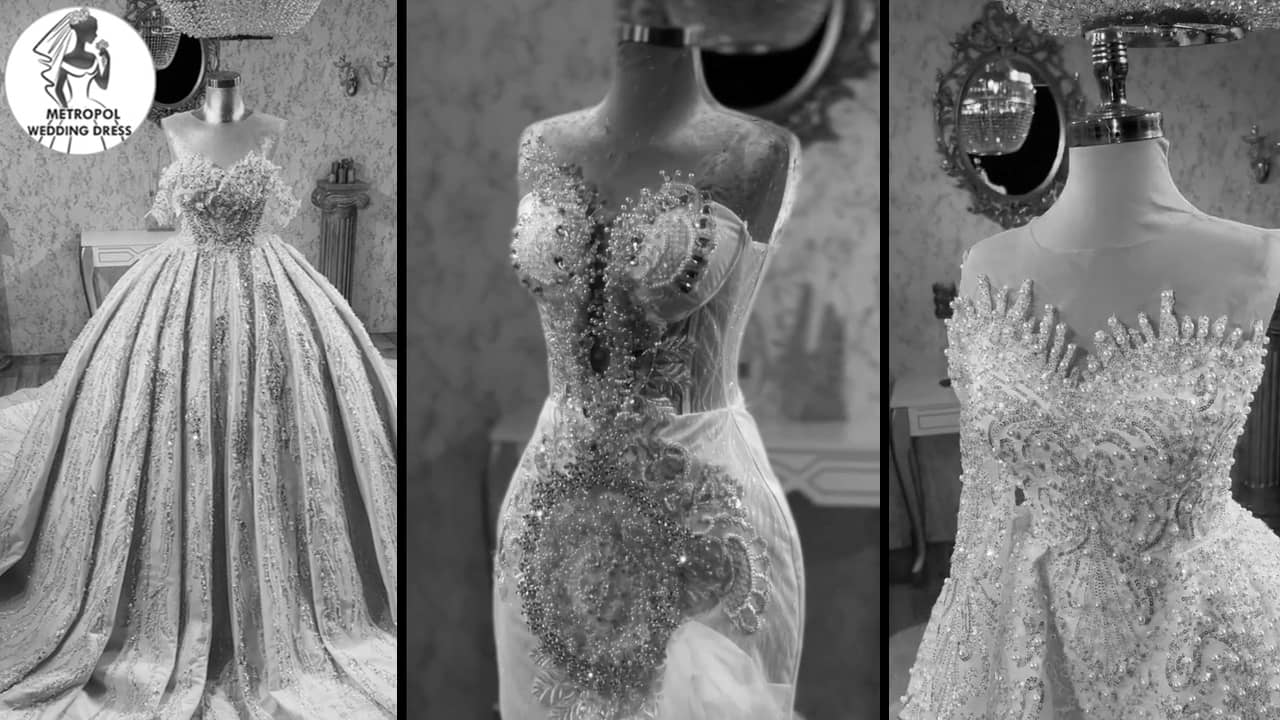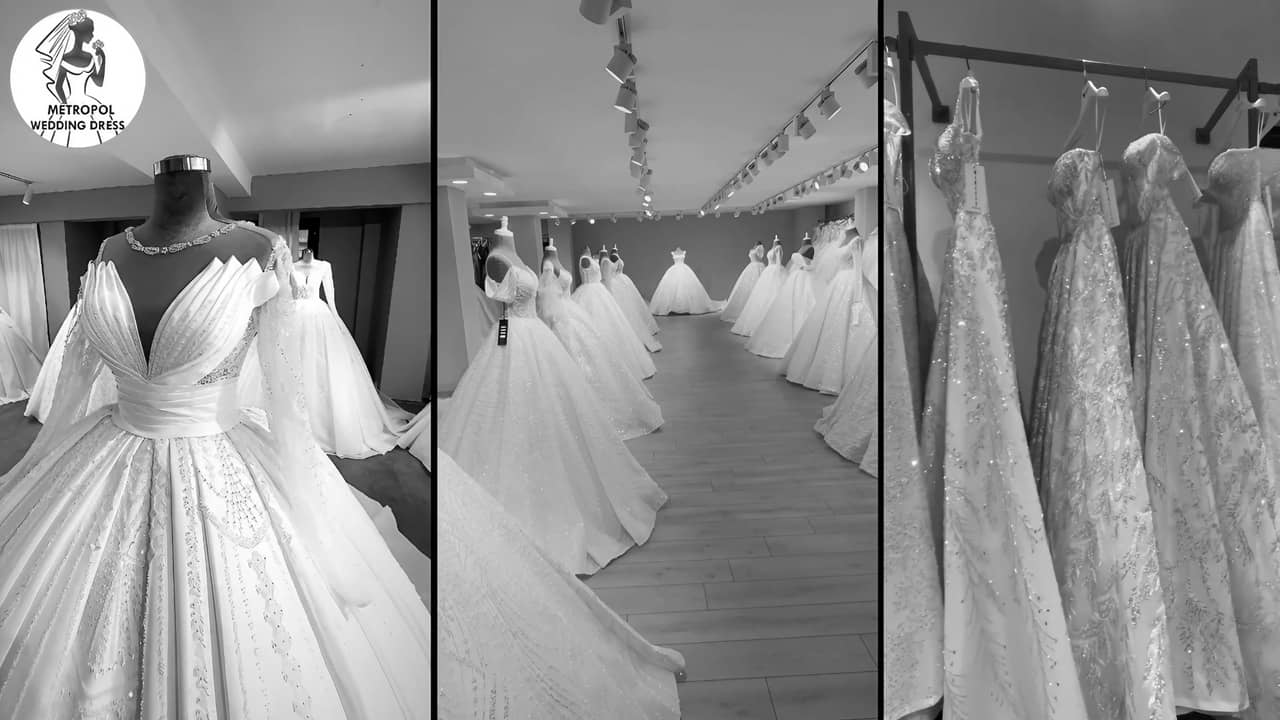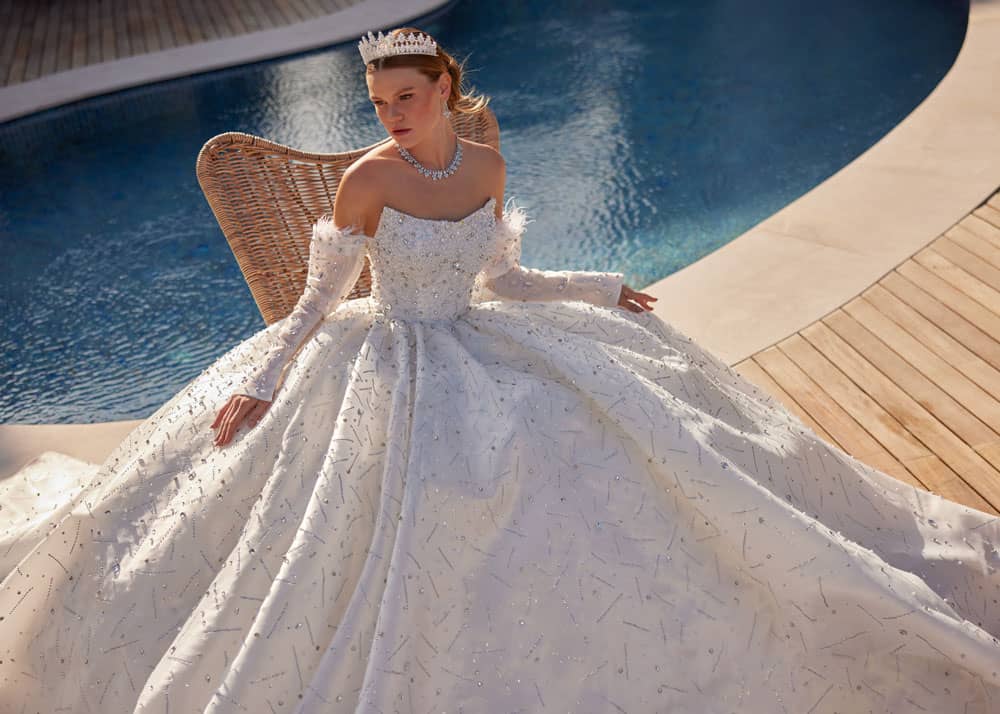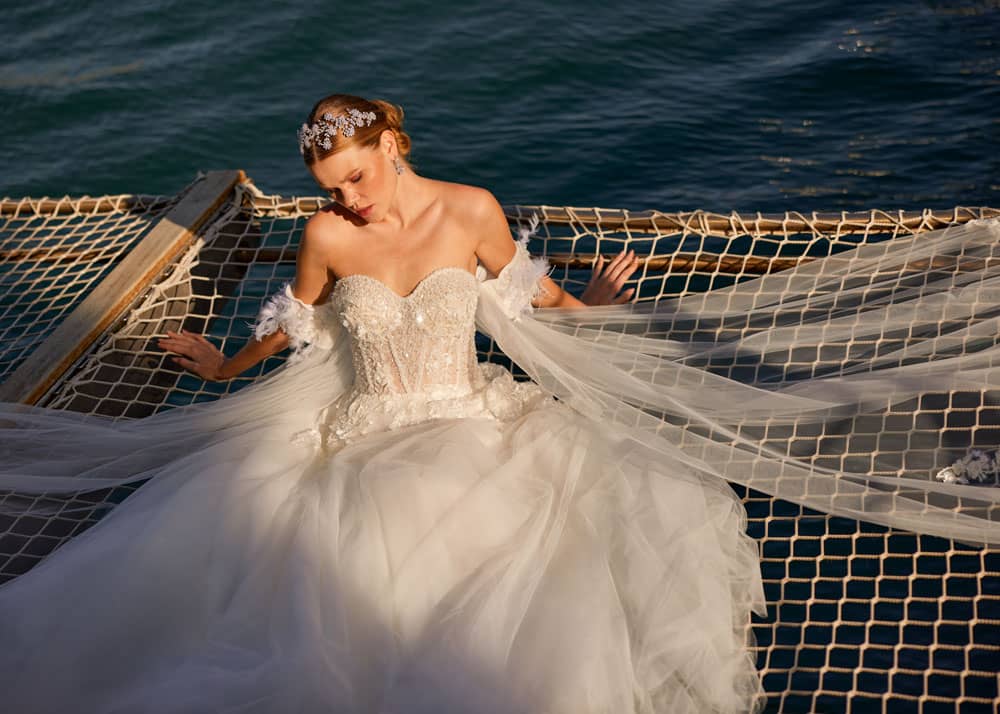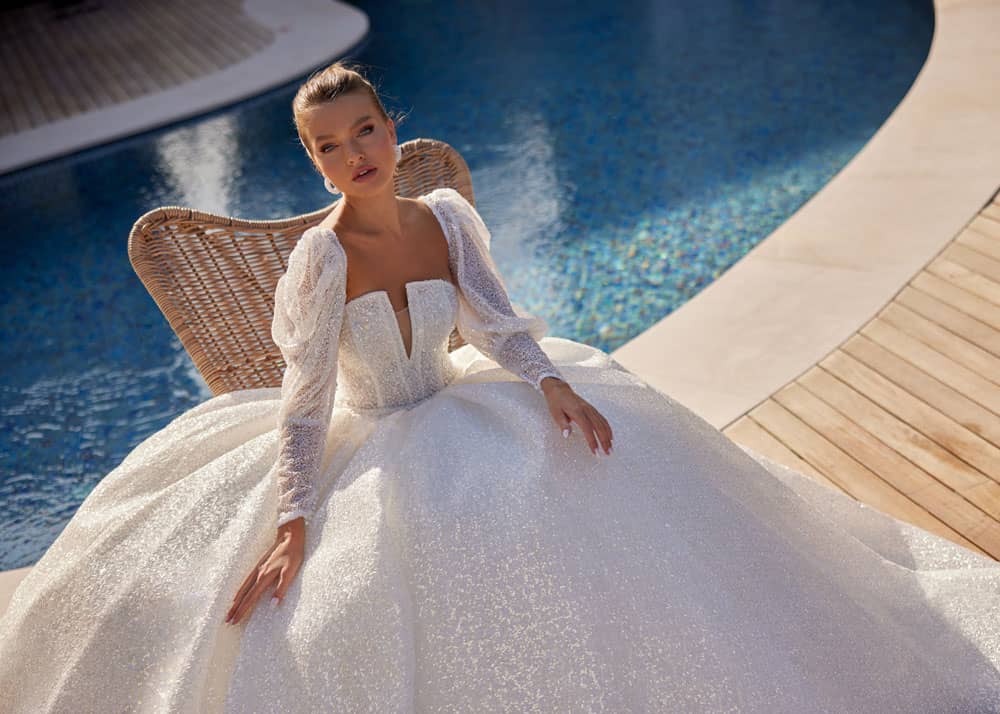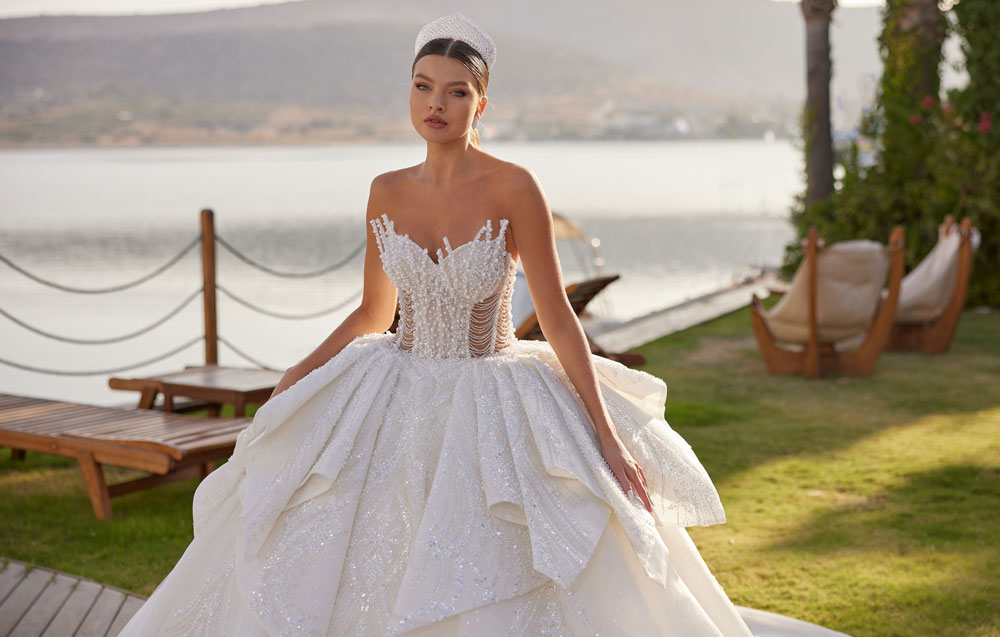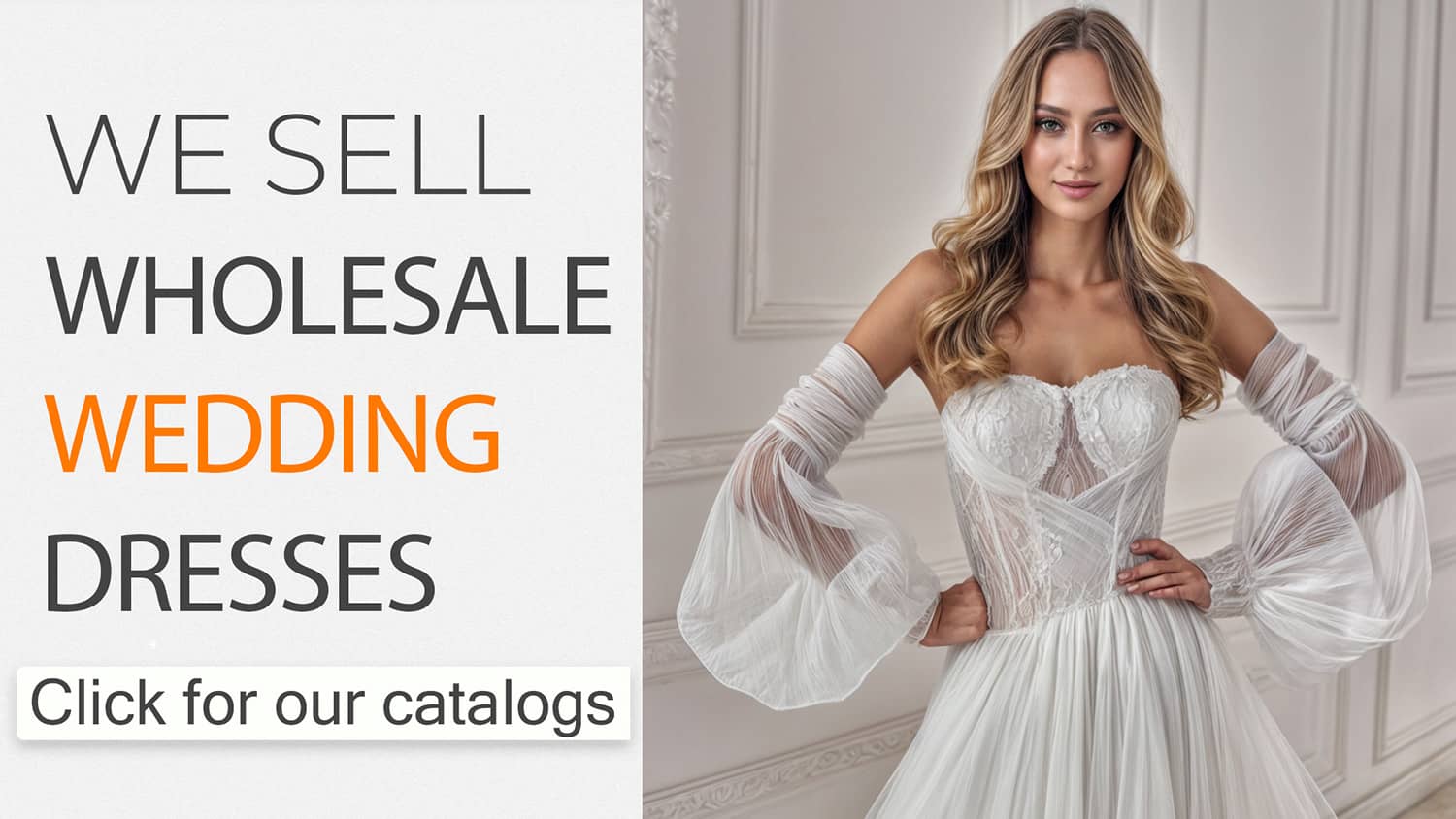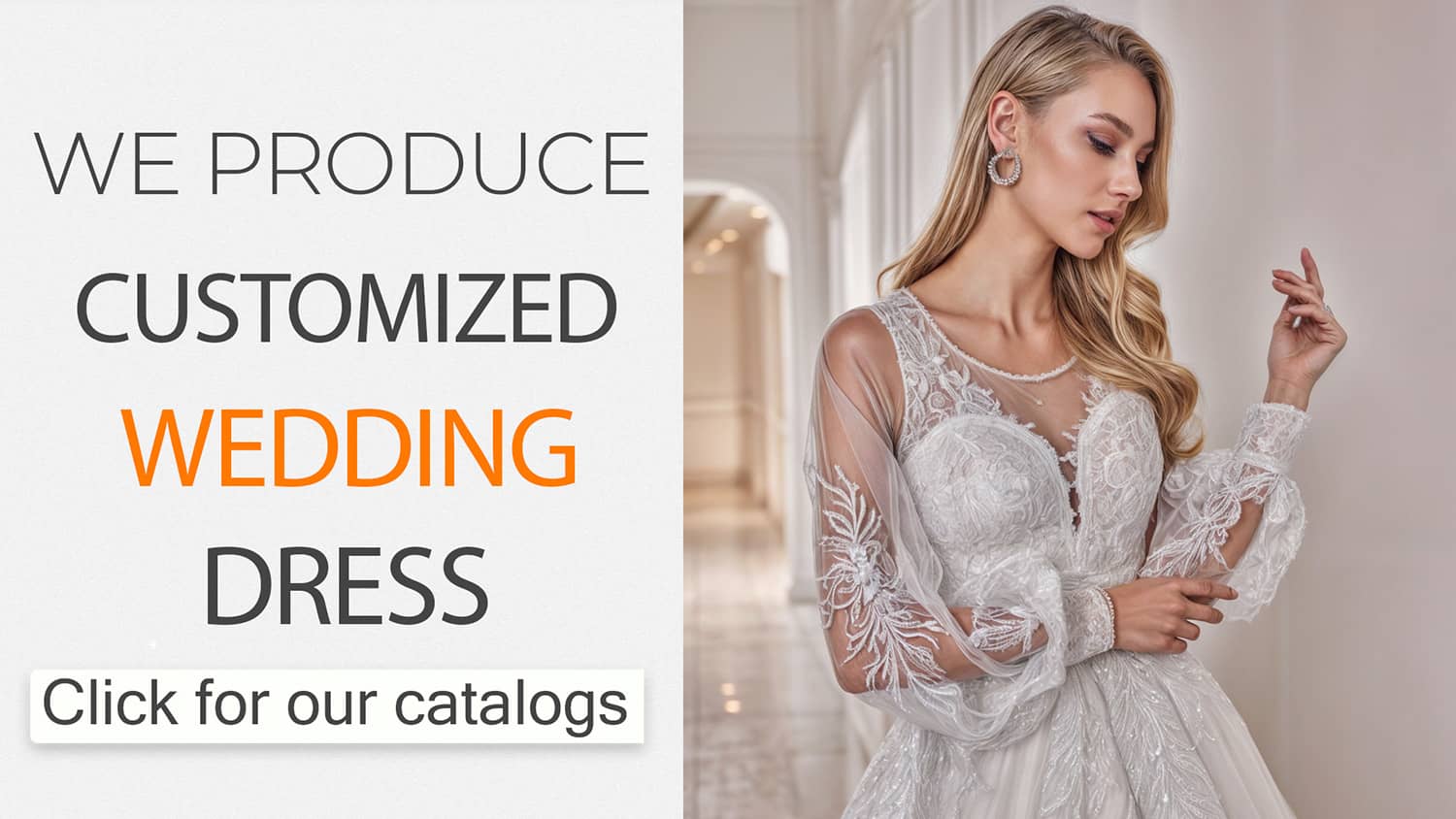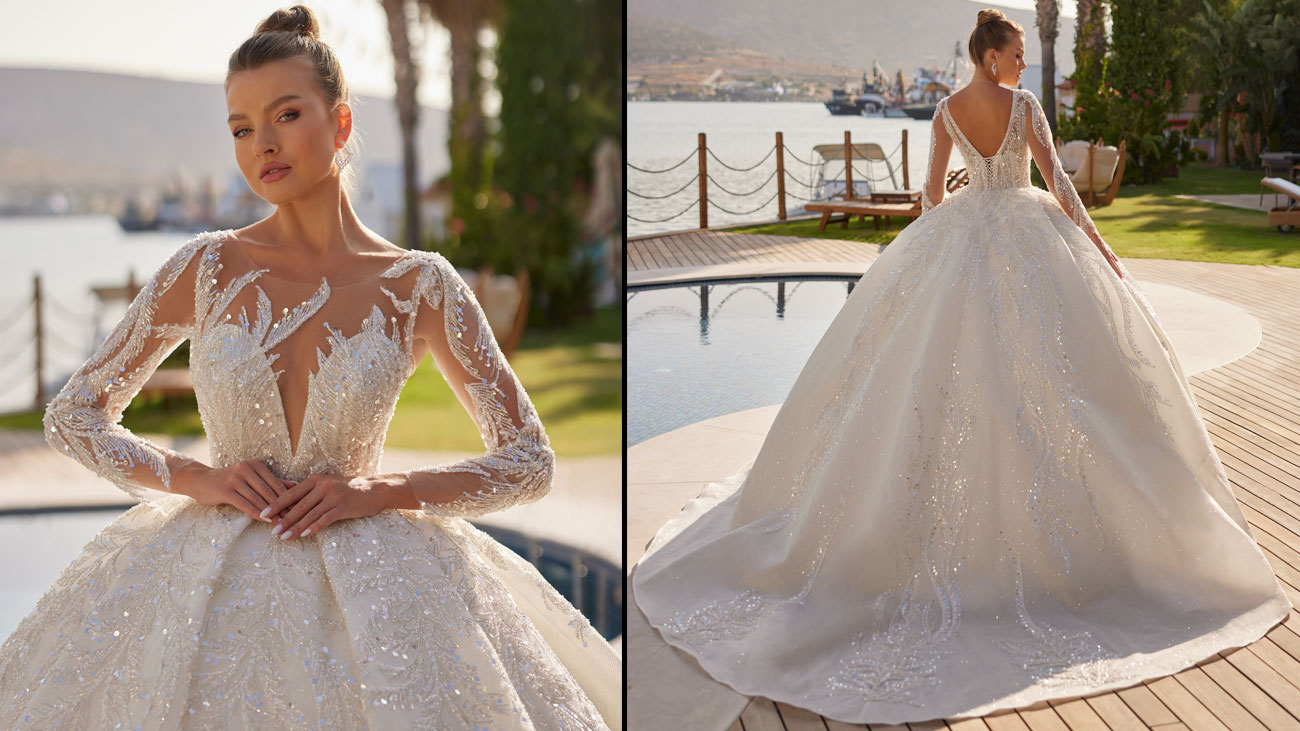
Who is Metropol Wedding Dress?
Metropol wedding dress was founded in 2004 in Konak, Izmir, Turkey. We pride ourselves on producing high quality wedding dresses with our 1200 m2 production workshop and friendly staff. Many stores in Europe and Asia work with us. Metropol wedding dress is a leading Turkish wedding dress manufacturer specializing in high quality, intricately designed wedding dresses for brides worldwide. With our focus on craftsmanship and wide range of fabric options, we offer designs that include both traditional and modern styles. Our expertise in lace, embroidery and tailoring makes us a competitive force in the global bridal fashion industry.
Why Choose Us?
As Metropol wedding dress, our most important features that distinguish us from other companies are; Our experience in mold, embroidery and weaving, We are always one step ahead of our competitors with our rich lace and fabric options. You can have your designs made in our atelier.
Customer Satisfaction, Reliable Service, Production Experience, 7×24 Whatsapp Support



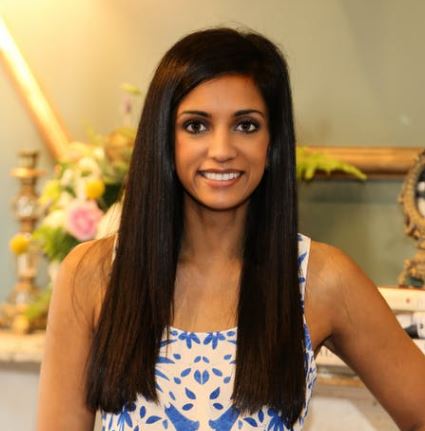
We have been serving in the wedding dress industry since 2004.
Our production site is in Izmir Konak district of Turkey.
We deliver within 21 working days when you have 1-3 orders. For orders more than 3 pieces, we will deliver in 45 working days.
Delivered in 1 week - 10 days. It is delivered to you within 2 days for an additional fee for your urgent orders to Europe. It is delivered to you within 4 days for an additional fee for your urgent orders to the USA.
The best quality lace, tulle and fabric are used according to your model. According to the model and lace density, the price of the model will be calculated and you will be informed.
After the Order is Confirmed, half of the fee is requested from the customer as a deposit at work. The remaining half is charged before being delivered to the cargo at the end of the work.
Our payment methods are western union, ria, Money gram.
For over two decades, Metropol Wedding Dress has been at the forefront of wedding gown design, bringing the dreams of countless brides to life.
Based in Turkey, our brand is synonymous with quality, elegance, and timeless beauty. We specialize in creating custom wedding dresses that reflect the unique personality and style of every bride, ensuring that each gown is a true masterpiece.
At Metropol wedding dress, we believe that every bride deserves to feel like a queen on her special day. That’s why we pour our passion and expertise into every stitch, creating dresses that are not only stunning but also a perfect fit for your body and your vision.

Our Services;
We are a wholesale wedding dress manufacturer. Apart from wedding dresses, we can also produce evening dresses and after party dresses. We have a 1200 M2 production workshop. We produce personalized wedding dresses.
We can produce your own designs. We can produce model wedding dresses as in the picture. We have an experienced team and quality workmanship. We have technological equipment. Our lace and fabric varieties are quite rich. We ship worldwide. Our prices vary between 300 Euros and 2000 Euros.
Our company, a wholesale wedding dress manufacturer with the the Metropol wedding dress brand, specializes in producing high-quality wedding dresses and selling them in bulk to retailers and wedding dress boutiques. Metropol brand is the sub-brand of the main company and we also have different brands.

Why Brides and Bridal Shops Trust Metropol Wedding Dress?
Our the Metropol wedding dress brand offers a wide range of wedding dresses that appeal to different styles, preferences and budgets.
Unparalleled Experience: With 20 years of experience, we’ve honed our craft to perfection. Our team of skilled artisans and designers are experts in creating wedding gowns that are both beautiful and comfortable.
Custom Designs: We understand that no two brides are the same, which is why we offer fully customizable wedding dresses. From the silhouette to the fabric, every detail can be tailored to your exact specifications.

Quality Craftsmanship: Every Metropol Wedding Dress is handcrafted using the finest materials. We take pride in our meticulous attention to detail, ensuring that every gown is a work of art.
Wide Range of Styles: Whether you’re looking for something classic and timeless or modern and trendy, we offer a wide range of styles to suit every bride’s taste. Our collection includes everything from elegant ball gowns to sleek, minimalist designs.
Affordable Luxury: At Metropol, we believe that every bride deserves luxury on her wedding day, regardless of budget. We offer a range of price points to ensure that every bride can find her perfect dress without compromising on quality.
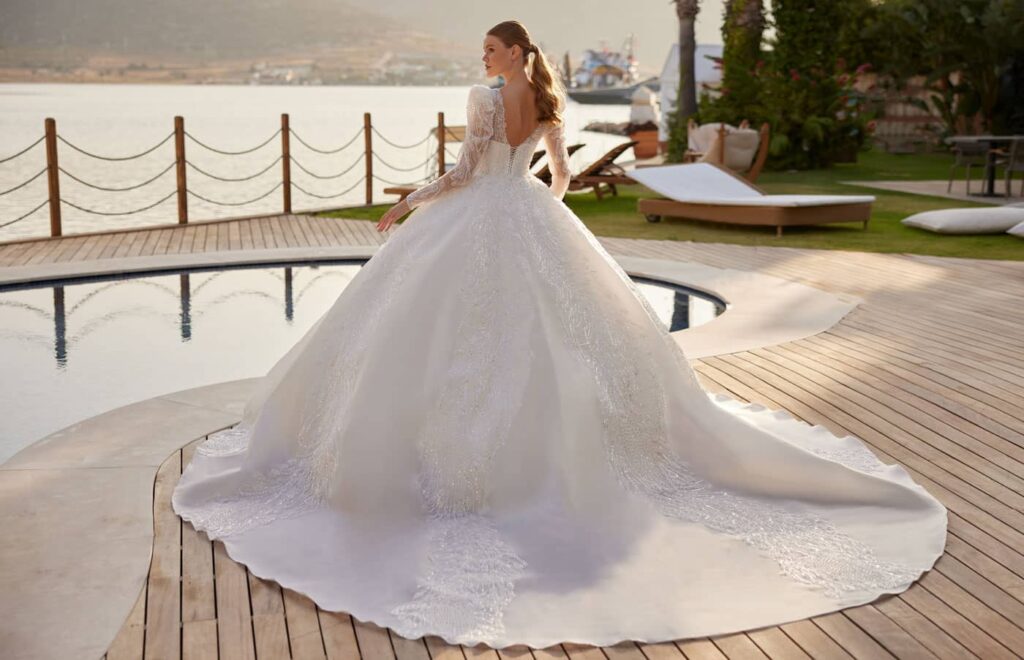
Wholesale and Retail Options: In addition to retail, we offer competitive wholesale pricing for bridal shops around the world. Partner with us to offer your customers the best in wedding fashion.
The Metropol Wedding Dress Experience – Tailored to Perfection
At Metropol Wedding Dress, we’ve perfected the art of creating custom wedding dresses that are as unique as the brides who wear them. Our process is simple, yet thorough, ensuring that your gown is everything you’ve ever dreamed of.
1. Initial Consultation: Your journey begins with a one-on-one consultation with our expert designers. During this session, we’ll discuss your vision, preferences, and any specific ideas you have for your dress. Whether you have a clear picture in mind or need some guidance, we’re here to help.
2. Design and Fabric Selection: Once we have a clear understanding of your vision, our designers will create sketches of your dress. You’ll also have the opportunity to choose from a wide range of high-quality fabrics, laces, and embellishments to bring your design to life.
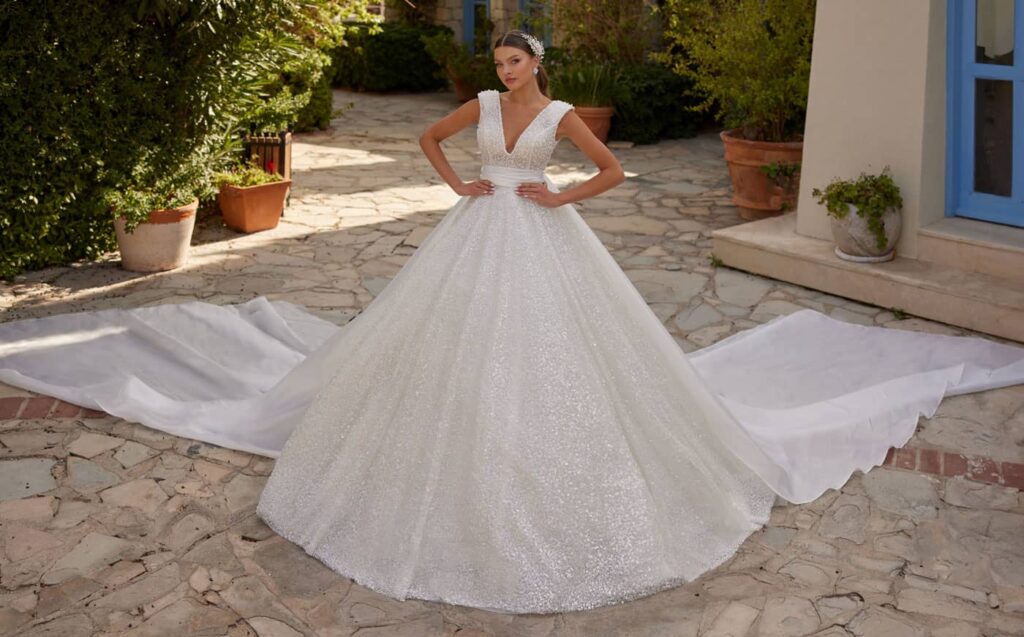
3. Fittings and Adjustments: Creating a custom wedding dress is a collaborative process. You’ll have multiple fittings to ensure that your dress fits perfectly and looks exactly as you imagined. We make adjustments as needed until the gown is flawless.
4. Final Delivery: After the final adjustments, your dream dress is ready. Whether you’re in Turkey or abroad, we ensure that your gown is delivered in pristine condition, ready for your big day.
5. Aftercare and Preservation: We also offer services for aftercare and preservation, ensuring that your wedding dress remains as beautiful as the day you wore it.
Our Metropol wedding dress brand also offers personalization options for brides who want to make their dresses unique and personalized.
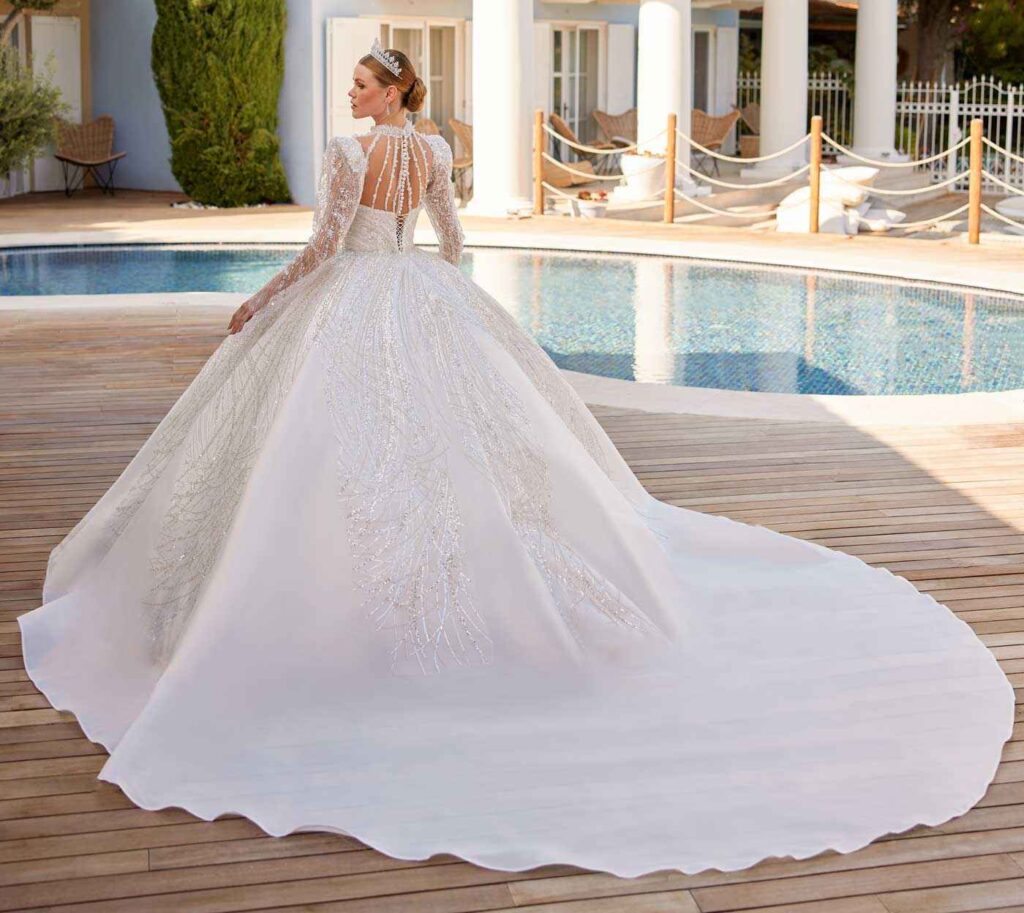
Our the Metropol wedding dress brand offers dresses in different sizes from 6 to 30, making it easier for brides of all shapes and sizes to find the size that best suits them.
Discover the Diversity of Metropol Wedding Dress Designs
While we specialize in custom wedding dresses, we also offer a stunning collection of ready-to-wear gowns. Our collection is a reflection of the latest trends combined with timeless elegance. Explore some of our signature styles below:
Classic Elegance: Perfect for the traditional bride, these gowns feature timeless silhouettes, intricate lace details, and luxurious fabrics.
Modern Minimalism: For the contemporary bride, our modern designs offer sleek lines, clean cuts, and understated elegance.
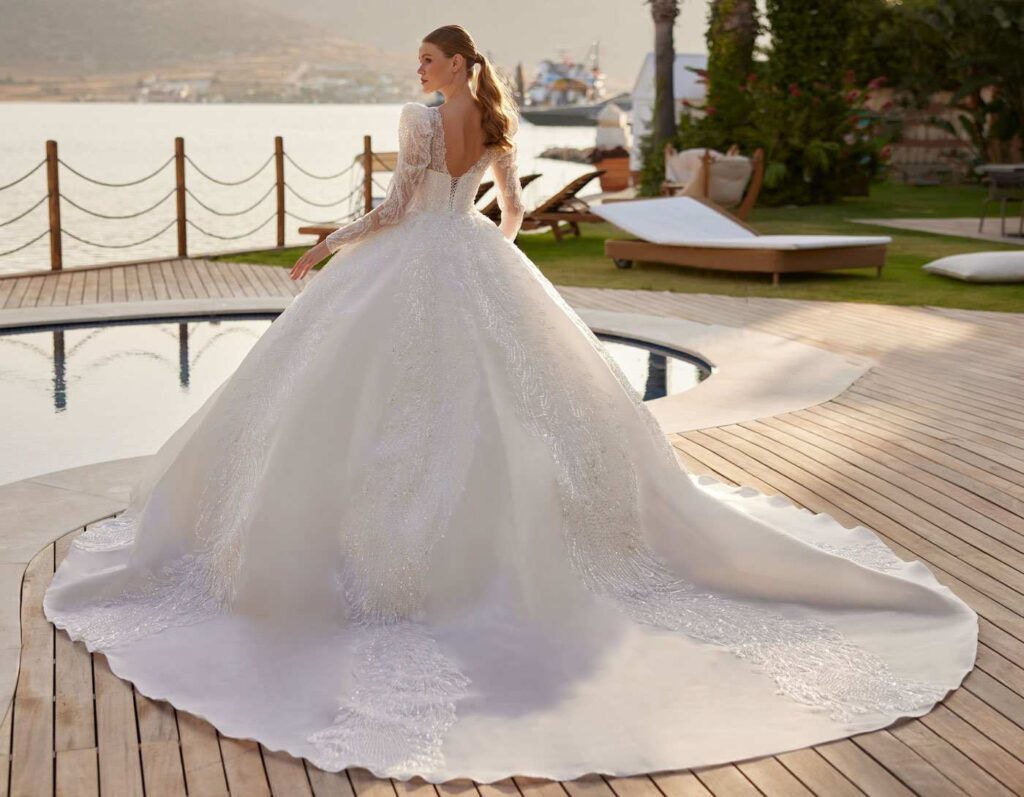
Romantic Boho: Embrace your inner free spirit with our boho-inspired dresses, featuring flowing fabrics, floral lace, and effortless charm.
Glamorous Showstoppers: Make a statement with our glamorous gowns, adorned with intricate beadwork, sequins, and bold silhouettes.
Each gown in our collection is crafted with the same attention to detail and quality as our custom designs. Visit our store in Turkey or browse our online gallery to find your perfect dress.

Hear from Our Happy Brides
At Metropol Wedding Dress, nothing makes us happier than hearing from brides who felt beautiful on their special day. Here are some testimonials from our satisfied customers:
“My experience with Metropol Wedding Dress was nothing short of amazing. From the first consultation to the final fitting, the team made me feel like their top priority. My custom dress was everything I dreamed of and more!” – Sarah, Bride
“As a bridal shop owner, I’ve worked with many manufacturers, but Metropol wedding dress stands out for their quality and reliability. Their dresses are always beautifully made, and my clients love them.” – Maria, Bridal Shop Owner
“I was looking for a unique dress that reflected my personal style, and Metropol delivered. The whole process was seamless, and the final result was breathtaking. I felt like a queen on my wedding day!” – Ayşe, Bride
These are just a few of the many success stories we’ve been a part of. We’re honored to have played a role in so many beautiful weddings, and we can’t wait to be a part of yours.
Our brand offers various accessories such as veils, belts, sashes and shoes that complement your dresses.

Services:
As a wholesale wedding dress manufacturer, the Metropol wedding dress offers excellent customer service to our customers.
Partner with Metropol Wedding Dress – Wholesale Opportunities
Are you a bridal shop owner looking to offer your customers the very best in wedding fashion? Metropol Wedding Dress offers competitive wholesale pricing on our stunning collection of wedding gowns.
Exclusive Designs: Offer your clients something unique with our exclusive designs that aren’t available anywhere else.
Flexible Ordering: Whether you need a single dress or a large order, we offer flexible ordering options to meet your needs.
Dedicated Support: Our team is here to support you every step of the way, from selecting the right styles for your store to ensuring timely delivery.
Global Shipping: We ship worldwide, so no matter where your store is located, you can offer your clients the best in wedding fashion.
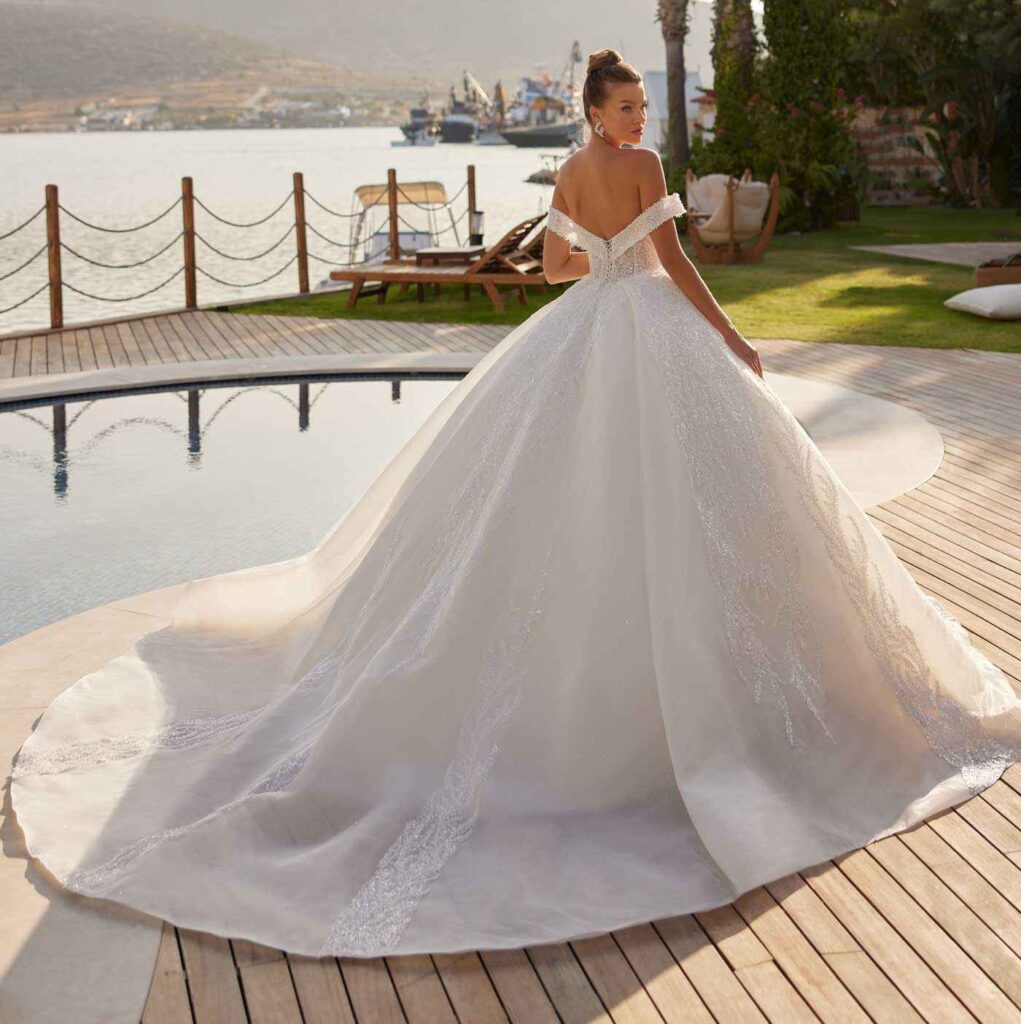
Our company has a dedicated team of sales representatives who help retailers and bridal boutiques choose the right dresses based on their customers’ preferences and budgets.
Partner with Metropol Wedding Dress and provide your customers with gowns that combine quality, elegance, and affordability. Contact us today to learn more about our wholesale opportunities.
Experience the Metropol Wedding Dress Difference in Person
If you’re in Turkey or planning a visit, we invite you to experience the magic of Metropol Wedding Dress in person. Our store is located in a beautiful setting, where you can browse our collection, meet with our designers, and start your journey to finding the perfect wedding dress.
Visiting our store gives you the opportunity to see our gowns up close, feel the quality of our fabrics, and get personalized attention from our expert team. Whether you’re a bride or a bridal shop owner, we’d love to welcome you to Metropol Wedding Dress.
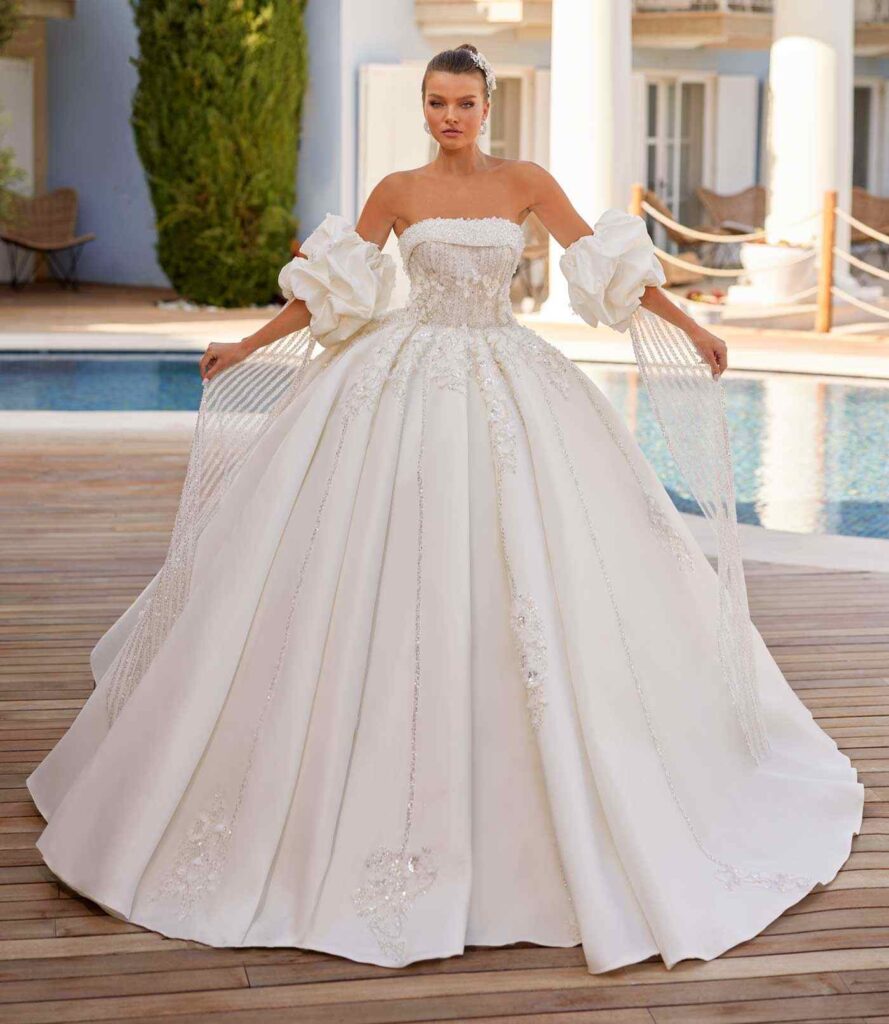
Sales representatives also advise on marketing strategies, promotions and discounts to help retailers increase sales.
How long does it take to create a custom wedding dress?
The timeline for a custom wedding dress can vary depending on the complexity of the design. On average, it takes about 3-6 months from the initial consultation to the final delivery. We recommend starting the process as early as possible to ensure ample time for fittings and adjustments.
Do you offer international shipping?
Yes, we ship our wedding dresses worldwide. Whether you’re ordering a single dress or a wholesale order, we ensure that your gowns are delivered safely and on time.
Can I visit your store to see the dresses in person?
Absolutely! We welcome all brides and bridal shop owners to visit our store in Turkey. Here, you can see our collection up close, try on gowns, and work with our designers to create your custom dress.
What if I’m not sure what style I want?
Don’t worry! Our experienced designers are here to help. During your consultation, we’ll discuss your preferences, body type, and wedding theme to suggest styles that will complement you perfectly.

Do you offer plus-size wedding dresses?
Yes, we believe that every bride deserves to feel beautiful on her wedding day, regardless of size. We offer custom designs in all sizes, ensuring that your dress fits you perfectly.
How can I become a wholesale partner?
If you’re interested in offering Metropol Wedding Dresses in your bridal shop, please contact us to discuss wholesale opportunities. We offer flexible ordering options and dedicated support to our wholesale partners.
Ready to Find Your Dream Dress? Let’s Get Started!
At Metropol Wedding Dress, we’re dedicated to making your wedding day as special as you’ve always imagined. Whether you’re a bride looking for the perfect gown or a bridal shop owner seeking high-quality dresses for your clients, we’re here to help.
Contact us today to book your consultation, explore our collection, or learn more about our wholesale opportunities. Your dream dress is just a click away!
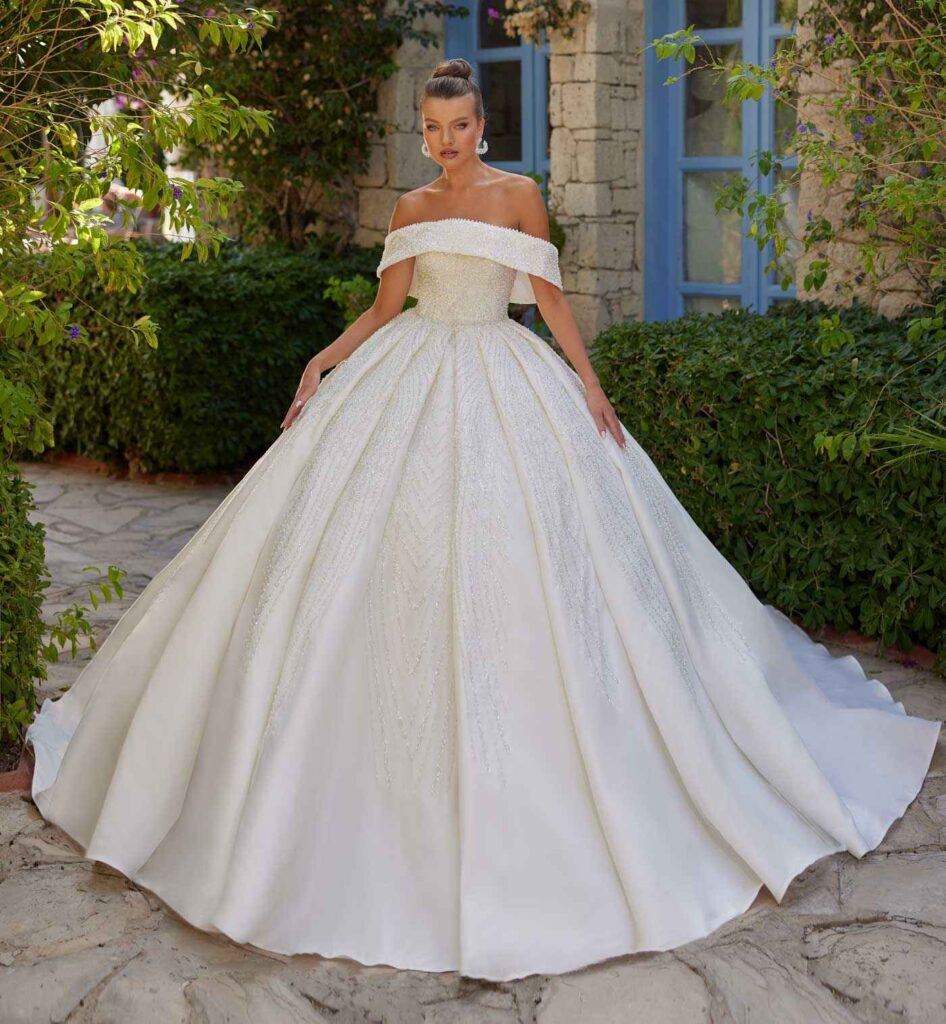
Stay Connected with Metropol Wedding Dress
Sign up for our newsletter to receive the latest news, updates on new collections, and exclusive offers.
Contact us today to book your consultation, explore our collection, or learn more about our wholesale opportunities. Your dream dress is just a click away!
Follow us on social media to see our latest designs, behind-the-scenes content, and customer testimonials.
Our company also offers personalization services for retailers who want to add their own labels or logos to dresses.
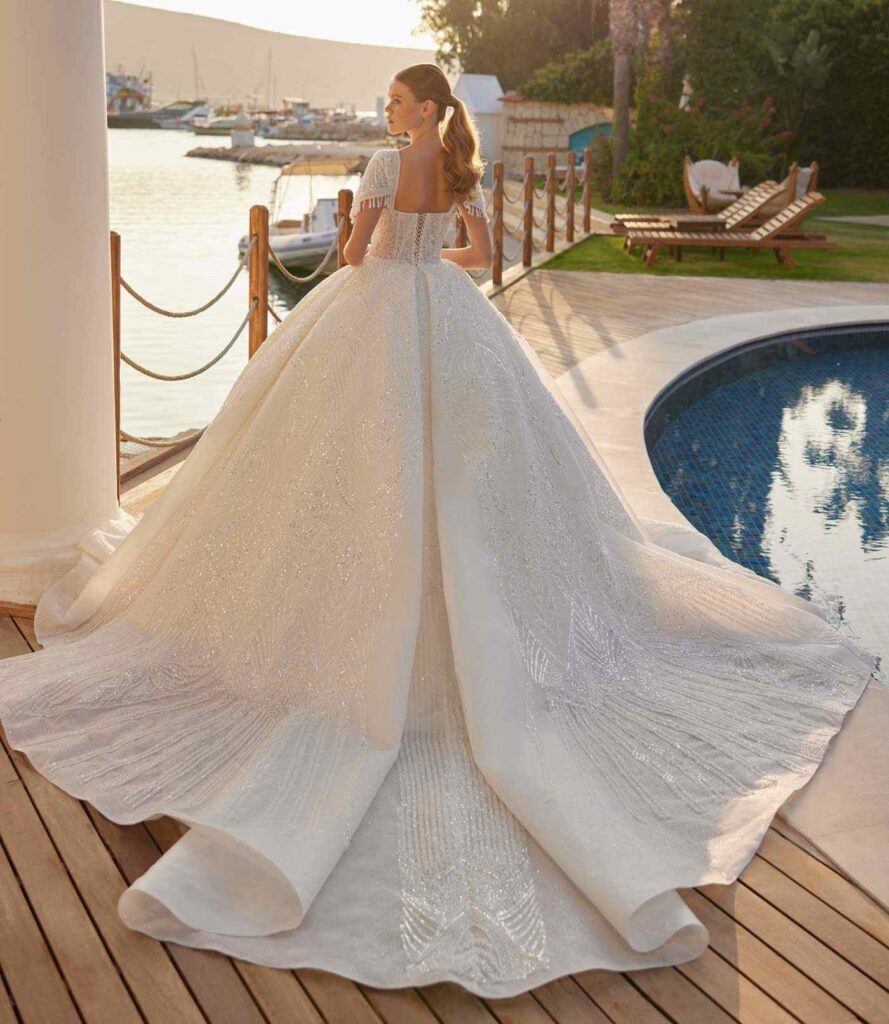
Expert Craftsmanship and Experience: With 20 years in the wedding dress manufacturing industry, Metropol Gelinlik is renowned for its expertise and innovation. Our experienced team combines traditional techniques with contemporary designs to create dresses that are both timeless and modern.
Custom Wedding Dresses: We specialize in custom wedding dress manufacturing, offering tailored solutions to ensure each gown is uniquely suited to your vision. Our custom wedding dress workshop is dedicated to crafting bespoke pieces that reflect individual style and personality.
Wholesale Wedding Dress Solutions: For retailers and boutiques, Metropol Gelinlik provides wholesale wedding dresses at competitive prices. Our extensive collection includes everything from affordable wedding dresses wholesale to luxury bridal gowns, ensuring there’s something for every client.
Eco-Friendly and Handmade Options: We are committed to sustainability with our eco-friendly wedding dress manufacturing practices. Additionally, our handmade wedding dresses offer a personal touch, combining traditional techniques with modern elegance.
Direct Factory Pricing: Benefit from our wedding dress factory direct pricing. We cut out the middleman to offer you exceptional value, whether you’re purchasing bulk wedding dresses or seeking individual custom creations.
Our company also provides after-sales support to its customers in case of any problems or complaints.
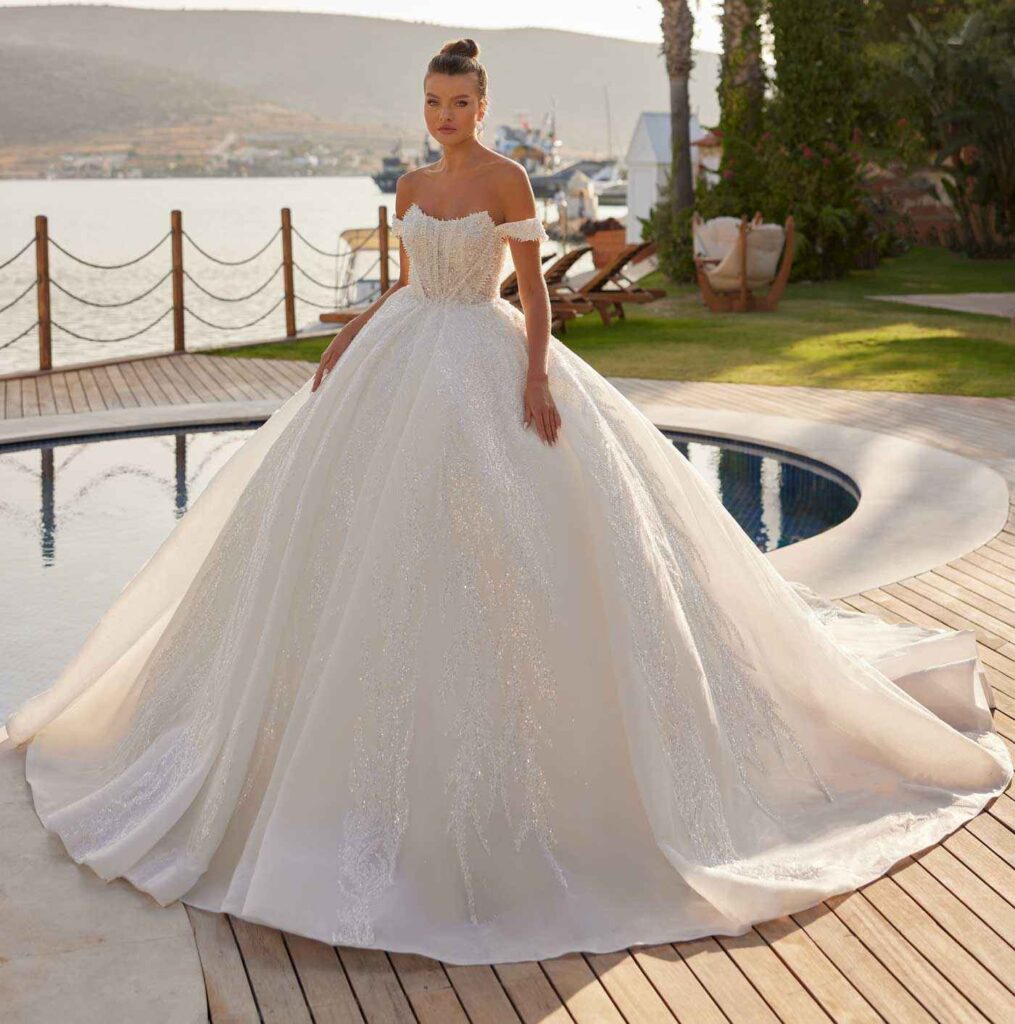
Wholesale Wedding Dresses: Metropol wedding dress is a leading wholesale wedding dress manufacturer. We provide a broad selection of designs, from classic to contemporary, suitable for various bridal styles and preferences. Our wholesale wedding dress suppliers are dedicated to offering quality products at affordable prices.
Bulk Wedding Dress Sales: Looking for bulk wedding dress sales? Our discount wedding dresses in bulk are perfect for retailers looking to stock their stores with high-quality, affordable gowns. We ensure that every dress meets our rigorous standards of excellence.
Custom Wedding Dress Manufacturing: Our custom wedding dress services are designed to bring your unique vision to life. From initial consultation to final fitting, our custom wedding dress designers work closely with you to create a gown that exceeds your expectations.
High-End and Luxury Wedding Dresses: For those seeking something truly special, our high-end wedding dress manufacturing services provide luxurious options that stand out. Our couture wedding dress designs are perfect for brides who want to make a statement on their special day.
Winter Wedding Dresses Wholesale: Specializing in seasonal collections, we offer winter wedding dress wholesale options that combine warmth with style. Our winter bridal gowns are designed to keep brides comfortable and elegant throughout their winter wedding.
Reputation:
The Metropol wholesale wedding dress manufacturer is famous for producing quality wedding dresses that are both stylish and affordable.

Why Partner with Metropol Wedding Dress?
1. Global Reach: Our commitment to providing quality wedding dresses extends worldwide. With our efficient shipping processes, we serve clients around the globe, ensuring that no matter where you are, you can access our premium wedding dress collections.
2. Comprehensive Range of Designs: From haute couture wedding dress design to made-to-order wedding gowns, our diverse portfolio includes something for every bride. Explore our custom wedding dress tailoring options to find the perfect gown.
3. Exceptional Value and Quality: At Metropol wedding dress, we balance luxury with affordability. Our wholesale wedding dress solutions are designed to offer excellent value without compromising on quality, ensuring that you receive the best of both worlds.
4. Personalized Service: Our dedicated team provides personalized wedding dress manufacturing services to meet your specific needs. Whether you’re a retailer or a bride-to-be, we are here to assist you every step of the way.
5. Innovation and Trends: Stay ahead of bridal fashion trends with our innovative wedding dress designs. We continually update our collections to reflect the latest trends, ensuring that you offer your clients the most current styles.
The our brand has won many industry awards for its innovative designs and exceptional customer service.
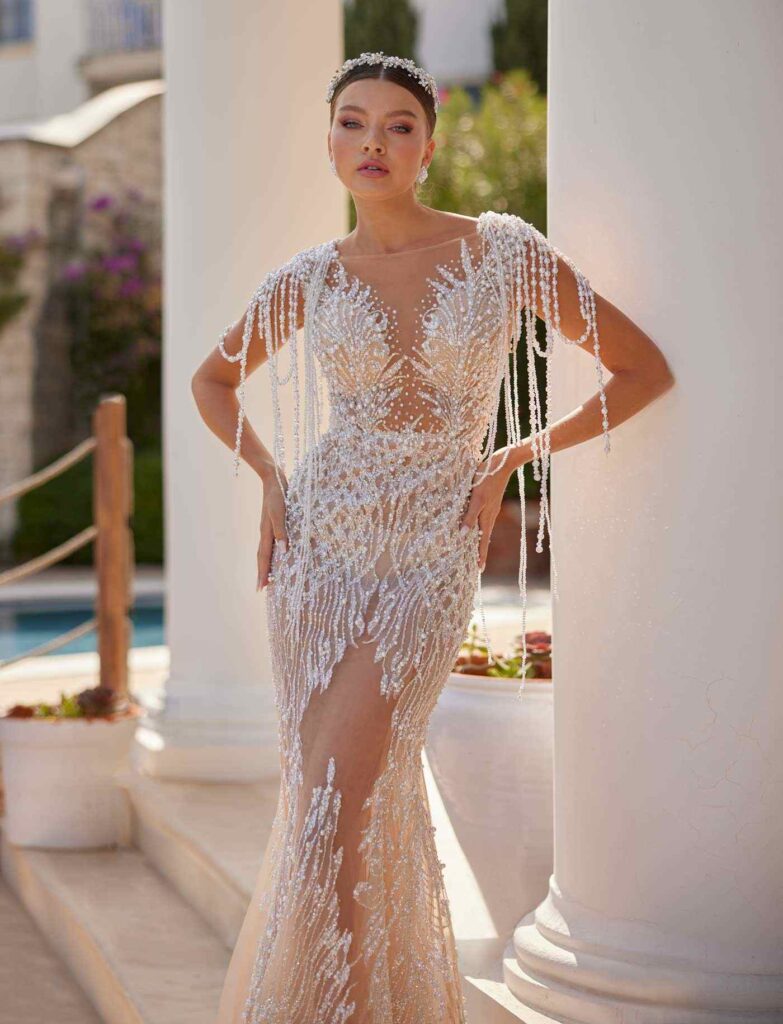
Our Commitment to Sustainability
Eco-Friendly Wedding Dresses: Metropol wedding dress is committed to sustainable practices. Our eco-friendly wedding dress options are crafted with care to minimize environmental impact, allowing you to offer your clients beautiful gowns with a clear conscience.
Ethical Manufacturing Practices: We prioritize ethical practices in every aspect of our production. From sourcing materials to crafting each gown, we ensure that our processes are both responsible and transparent.
Customer Testimonials
“Working with Metropol wedding dress has been an incredible experience. Their custom wedding dress manufacturing is second to none, and their wholesale options have significantly enhanced our store’s offerings.”
“The quality and craftsmanship of Metropol wedding dress’s wedding dresses are unmatched. Our clients are always thrilled with the bespoke options and the exceptional service we receive.”
Start Your Journey with Metropol Wedding Dress
Whether you’re a bride seeking the perfect gown or a retailer looking for exceptional wholesale wedding dresses, Metropol wedding dress is here to help. Discover the difference of working with a leading wedding dress manufacturer and let us bring your vision to life.

